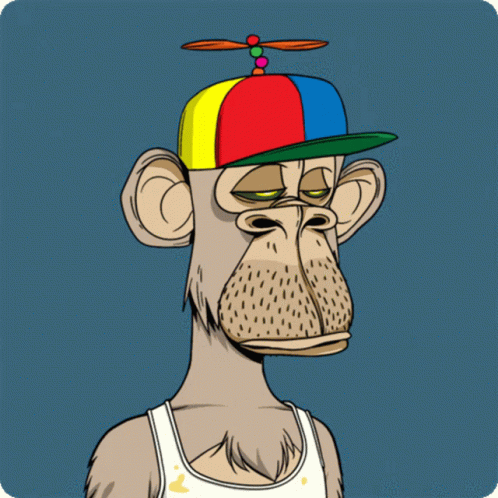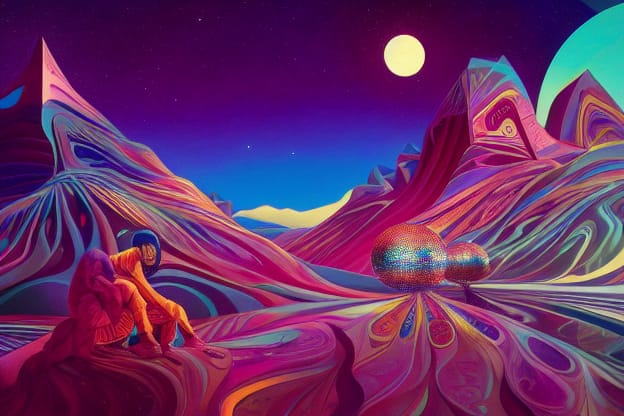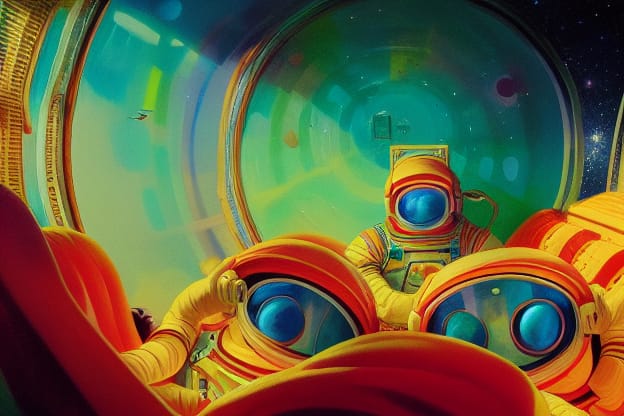What is an NFT? | More than just fancy jpegs
Non-fungible tokens (NFTs) are quickly morphing from novelty collectible uses cases to an important cornerstone for a new internet.

An NFT is an acronym that is short for non-fungible token. OK, so wtf is that?
Fungibility is an important concept in money, and it’s becoming an increasingly important part of the digital asset space.
If something is fungible it means it can easily be exchanged for something else like it without any loss of value.
A dollar is fungible because if I go to a store and pay for something with a five-dollar bill and get four one-dollar bills back, it doesn’t matter which four-dollar bills I get back. One dollar bill is as good as the next: this is what it means to be fungible.
The fungibility of cash is an important attribute. If different dollars had different values based on things like serial numbers or mint location or whatever, then it would be really hard to have free and easy exchanges.
People would constantly want to look up what kind of dollar they had to see if it was more or less valuable than the dollar they were exchanging.
Non-fungible means that the underlying asset is unique, one-of-a-kind, or not easily replaced by something else. If I own a classic car, it increases in value because there aren’t many like it. I can’t just trade it in for the same make, model, color, etc.
When things are non-fungible, they are generally more valuable, and more collectible. Ownership becomes more important when things are non-fungible.
Historically, one of the biggest issues with all things digital is that everything is fungible. Digital data is easily copied, pasted, shared, pirated, etc. One of the reasons why digital data is so fungible is because there are now clear systems of ascribing ownership status to a certain kind of data, like an image or a video (or this post).
But now there is — and likely it will be game-changing for the way that digital data is created and owned. The new ownership model is based on non-fungible tokens or NFTs.
One, they are becoming an integral part of web3 systems and economies.
Two, NFTs are moving beyond their first popularized format of speculative one-of—a-kind jpegs and proving valuable for several different applications.
How does an NFT work?
At their core, NFTs are smart contracts.
Smart contracts are programmable elements that live on a digital ledger or a blockchain.
A core attribute of a blockchain is that it is immutable, or provides a permanent record that can’t be altered. These attributes of being able to record smart contracts and do it in a way that provides a permanent record, make the blockchain NFT model well-suited to creating additional programmability and composability.
So NFTs are smart contracts that outline specific details of ownership, such as when something was created, who created it, and who owns it now.
An NFT smart contract is created through a process called minting, which is when a contract outlining specific data is created. The minting process associates a blockchain public key and a private key to an asset (the NFT). The key combo makes the NFT ownership data verifiable, but also the private key holder has complete ownership.
So to recap: An NFT is a smart contract that lives on a blockchain (making it completely auditable) and that can only be attributed to one digital wallet at a time, making it possible to clearly understand who owns the asset. The ability to transfer ownership status from wallet to wallet also means that it is easy to buy, sell, or transfer NFTs within a blockchain ecosystem and the custody chain is also recorded and verifiable.
NFT use cases
In my humble opinion, the most interesting use cases for NFTs haven’t been developed yet.
While the earliest use cases for NFTs did get traction — the collectible artwork that drove an NFT bubble in mid-2022 (the NFT asset class hit a market peak of $21 billion in May of 2022, according to one estimate by Forbes, before crashing hard), fancy jpegs is a very simplistic NFT use case.

Here are a few other NFT use cases that are worth keeping an eye on, and that help round out an understanding of the full utility of what an NFT can do.
Identity
A big feature of web3 is that everyday people using the internet will have more control over their digital identity. More control will equate to better overall security. It also means that people will start to be able to own the data that they create, among other things (more on this in the next point).
A key component of web3 identity is controlling a digital wallet. One function of a digital wallet is to enable the creation of public addresses so that people can send and receive assets.
Until recently, using a digital wallet address was cumbersome because it required copying and pasting an alphanumeric address. Now, by using something like Ethereum Name Service, wallet users can make a human-readable address that is an NFT (like danielmcglynn.eth) for example.

A NFT-enabled web3 handle makes other activities easier or more streamlined, such as decentralized social media, or participating in web3 games.
Personal data
Another exciting and still emerging use case for NFTs is the ability for people to create and control personal data.
In traditional internet business models, user-generated content like photos, videos, social posts, etc., is largely owned by the platform it is created. The platforms use this data to generate traffic, draw attention, and sell advertising.
This platform-owned data is considered the default to how the internet works because creating alternative systems or more clearly delineated ownership of creative assets at an individual level wasn’t possible before.
But the digital wallet and NFT model change all of that. By using NFTs, I can now create new information, mint it to my wallet, and then decide how to use it as the verifiable owner of that data.
One example of this is the app Receipts, which makes it possible for people to mint proof of a workout as an NFT.

While this is a cool way to collect workouts or highlight key milestones or events, the real utility of an app like Receipts is that it starts to create a framework for how people can manage and use their data, mint it as an NFT, and then decide how they want to use that data.
Subscription, membership, events
There’s also a new kind of NFT-enabled category emerging that we can lump together under community.
Likely the creator model of the future will be more elaborate and multifaceted than what exists on the internet today.
By using NFTs as membership, subscription, or tickets for events, creators will be able to build value within their communities by offering unique or one-of-a-kind experiences — or having many different kinds of levels of participation in a community.
While I’m not sure how well this will scale, I think community-based NFT offerings by standalone creators could work well. One thing that I’m already seeing with certain communities sprouting up on Farcaster is the idea of creating a limited number of places or seats in a creator-led community and then when people want to leave the community, they can sell their seat to someone who wants to join.

Tokenize everything
I’ve written recently about the gathering energy behind the concept of bringing all assets onchain as tokenized assets — and what that means for both the blockchain space and for real-world assets.
But, somewhat relatedly, is the idea that almost anything — assets, artwork, collectibles, etc., can become NFTs. One advantage to tokenizing real-world assets or real-world collectibles is that then ownership history and other important details can live onchain.
Having an onchain token history could help with things like valuations and locating rare assets and collectibles. This is also especially true for digital artifacts and things like assets that are created and traded in computer games.
As the financial world moves toward the financialization of everything, it feels like the same logic will apply and the whole world will move toward the NFT-ification of everything.
The takeaway
NFTs are more than just fancy jpegs. Conceptually, NFTs are important to how web3 works and how new kinds of apps, services, and business models will emerge on the internet.
The best way to learn more about NFTs is to start playing around with them to get a better sense of the minting, collecting, and sharing elements. The good news is that these days there is no shortage of ways to start using NFTs.
Big-picture, NFTs, and digital wallets are two major cornerstones for building a better web3 because when those two tools are combined, they enable more well-defined creator ownership and control.